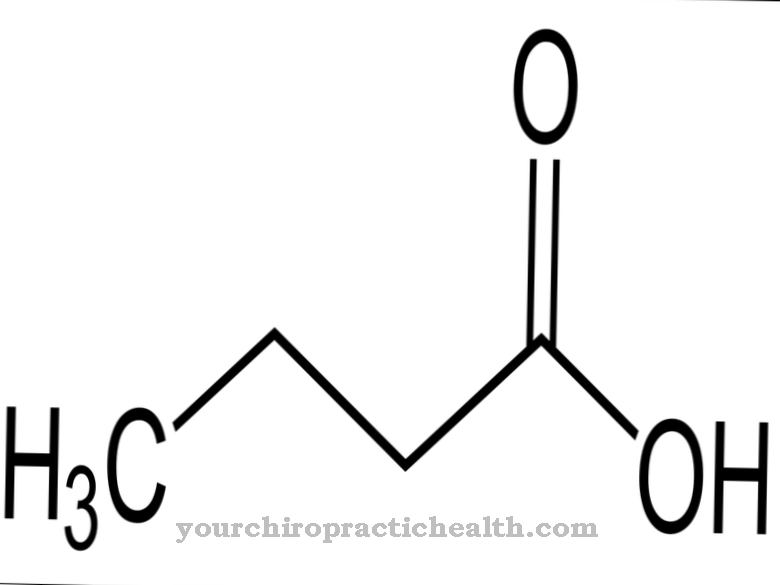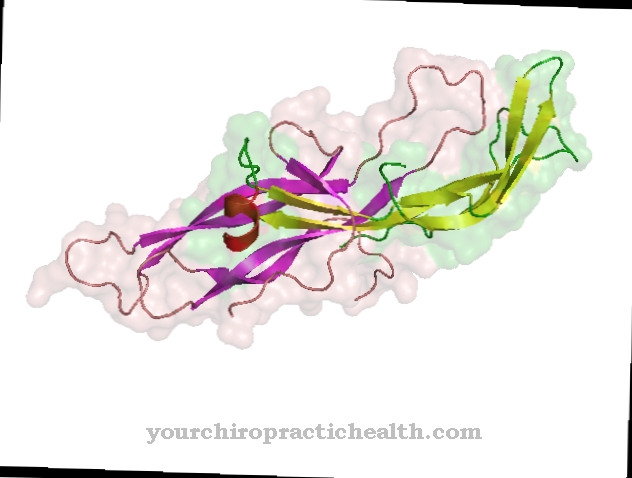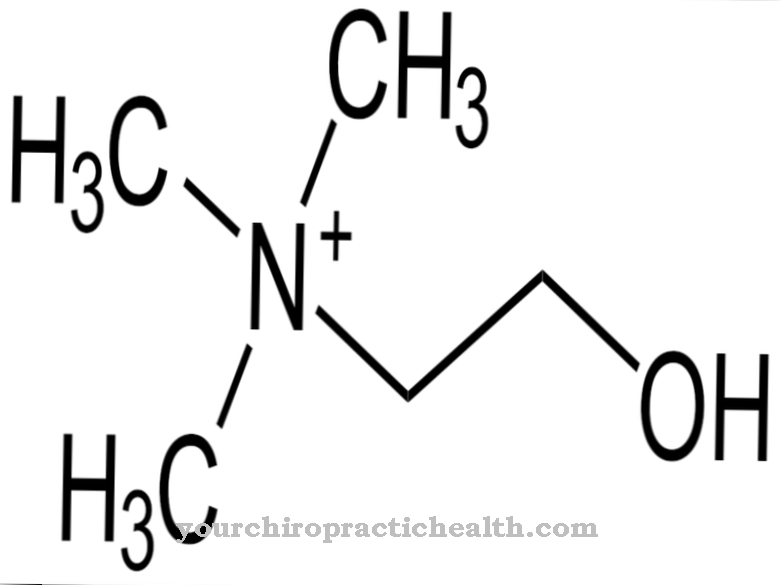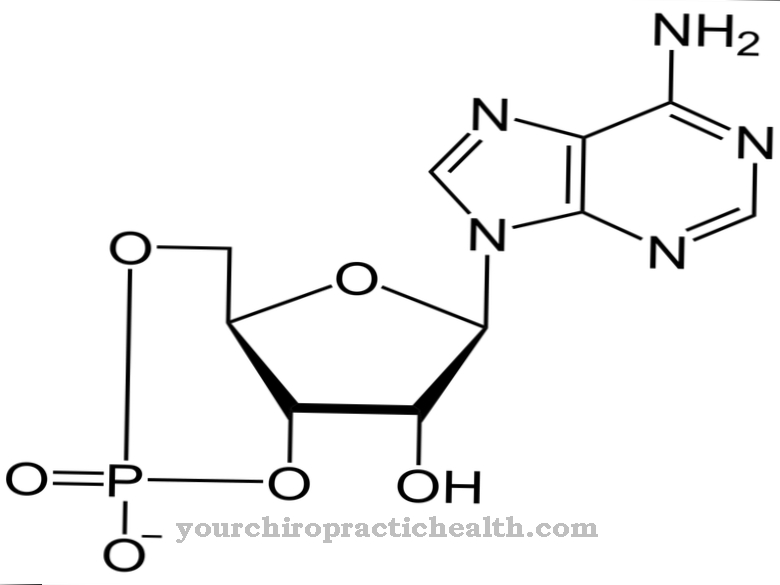Docosahexaenoic acid Like the other two omega-3 fatty acids alpha-linolenic acid (ALA) and eicosapentaenoic acid (EPA), it plays an important role in keeping the body healthy. However, the correct ratio of omega-3 to omega-6 fatty acids should be observed when consuming the important fatty acids.
What is docosahexaenoic acid?
Docosahexaenoic Acid - for short DHA called - belongs to the essential omega-3 fatty acids. The slightly yellowish liquid has the molecular formula C22H32O2. The long-chain, polyunsaturated fatty acid is an important building block in the cell walls of the brain, nerves and retina.
DHA is produced by photosynthesis in tiny microalgae (spirulina), which in turn are consumed by living things higher up in the food chain. The further up the living being is in the food chain, the more DHA it has in the body. Oily sea fish such as Atlantic herring, salmon, mackerel, sardine and tuna are high in DHA and EPA. People who want to forego the consumption of fish can obtain the daily required amount of DHA from plant-based foods containing alpha-linolenic acid (rapeseed oil, linseed oil, linseed, walnuts etc.)
However, alpha-linolenic acid can only synthesize about 2 to 5% of the daily amount of DHA required. Since the three omega-3 fatty acids ALA, EPA and DHA compete with the omega-6 fatty acid linoleic acid, EPA and DHA can quickly become insufficient. The body of newborns can produce more docosahexaenoic acid than that of adults. To promote the formation of DHA, those who are health-conscious should ensure that they have an adequate intake of vitamins C, E and B.
Function, effect & tasks
Docosahexaenoic acid dilates the blood vessels and therefore lowers blood pressure. The improved flow properties of the blood means that organs and tissues are better supplied with oxygen. DHA eliminates arrhythmias and thus improves the existing cardiac arrhythmias.
If it is taken in sufficient quantities, it lowers high cholesterol levels and thus prevents heart attacks, arteriosclerosis and strokes. Because it prevents the blood platelets from sticking together, it also reduces the risk of thrombosis. In addition, the docosahexaenoic acid makes the cell membranes elastic. It also has an immune system-boosting influence: the fatty acids are used to synthesize docosanoids, tissue hormones that curb inflammatory processes in the brain and nerves. In rheumatic diseases such as arthritis, Crohn's disease, ulcerative colitis and skin diseases such as psoriasis, it has an anti-inflammatory effect: It increases the level of eicosapentaenoic acid in the blood and thus reduces the formation of the inflammatory arachidonic acid.
As recently discovered, the polyunsaturated fatty acid DHA can even stop the growth of prostate cancer cells. Patients with inflammatory chronic bowel disease, Crohn's disease and ulcerative colitis, should consume up to 5 g of omega-3 fatty acids daily. A sufficient amount of docosahexaenoic acid in the body keeps the brain and nerves efficient: The cell membranes located there play an important role in the development of dementia and Alzheimer's disease and can have a positive effect on the course of the disease if a degenerative disease is already present.
By keeping the membranes elastic, DHA reduces the production of pathogenic amyloid beta, a substance that is responsible for the amyloid plaques typical of Alzheimer's disease in the brain and for the development of oxidative stress. Animal studies have shown that docosahexaenoic acid dramatically increases the production of the LR11 protein, which inhibits the formation of amyloid plaques.
Education, occurrence, properties & optimal values
DHA is produced in the liver and occurs in the brain and especially in the nerve cell membranes: The fatty acids in the brain consist of 97% DHA. It is also integrated into the photoreceptors of the retina (retina of the eye). It accounts for 93 percent of the fatty acids found there. In addition, docosahexaenoic acid is produced in large quantities in the mammary glands of nursing mothers.
The infant receives polyunsaturated fatty acids, which are important for the development of brain function, nerves and eyesight, through breast milk. His liver is not yet able to meet the increased demand. The female body can build DHA better than the male because of its higher estrogen level. DHA, which is not available to the body in bio-available form (fish meal or fish oil / krill oil capsules), is made from alpha-linolenic acid.
First the fatty acid EPA, which is also important for maintaining the metabolism, is produced. The enzymes Delta 5 and Delta 6 desaturase are necessary for this. In order to be able to produce them in sufficient numbers, the body needs vitamin B6, calcium, biotin, magnesium and zinc.
Diseases & Disorders
Undersupply and oversupply of docosahexaenoic acid are harmful to health. To prevent a DHA deficiency, the German Nutrition Society (DGE) recommends consuming a maximum of 3 g of EPA and DHA in its pure form (2 to 3 times a week at least 100 g of fish or the corresponding number of fish oil capsules daily) to take.
For an optimal supply, the fish can also be consumed frozen or canned. Vegan users need at least 1200 mg of ALA-containing products daily. Since the average European hardly ever consumes these amounts, dietary supplements with fish oil or algae oil capsules (for vegans) are recommended. The latter contain the appropriate dose of ALA.
The EU Expert Commission advises pregnant and breastfeeding women to supplement their daily DHA consumption with an additional 200 mg. It is advisable to give infants DHA supplements during the first two years of life. When it comes to DHA intake, however, the user should pay attention to the optimal ratio between omega-6 and omega-3 fatty acids, because if there is too much omega-6 in the body, less omega-3 / DHA is produced.
The German Nutrition Society (DGE) recommends a ratio of 5: 1. In addition, he should take into account factors that limit DHA metabolism in the body, such as stress, lack of vitamins and trace elements, increased age, diseases such as diabetes mellitus, alcohol dependence, high cholesterol levels, viral infections, liver diseases and chronic fat digestive disorders. Symptoms of DHA deficiency are tremors, impaired vision, muscle weakness, poor wound healing, reduced learning ability and, in infants, impaired growth and vision. A strong oversupply of docosahexaenoic acid increases the bleeding tendency, reduces the responsiveness of the immune system and leads to an increase in the LDL cholesterol level.
























.jpg)



